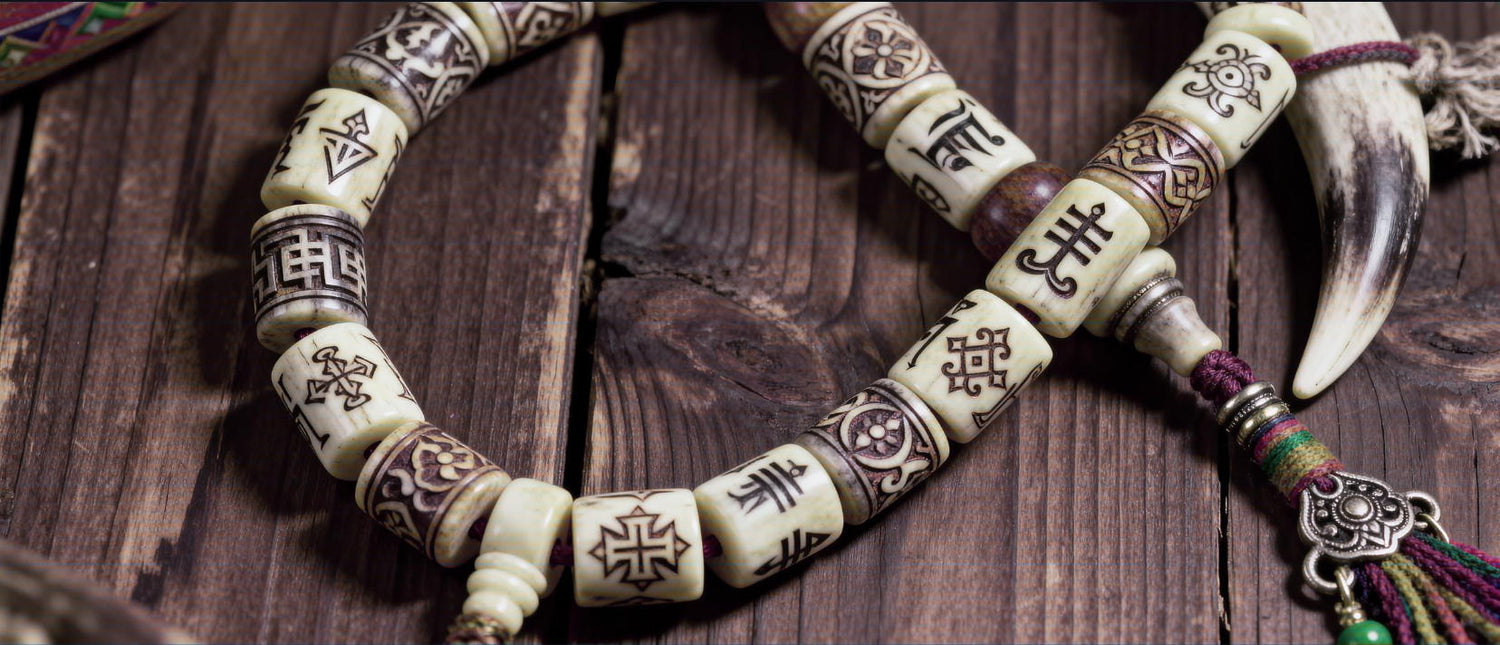
Om Mani Padme Hum: The Meaning & Power of the Six-Syllable Mantra
It begins as a low hum in a monastery, a vibration felt in the chest before it's heard by the ears. Soon, it’s a rhythmic chorus on a wind-swept mountain pass, whispered by a pilgrim with a worn mala in hand. Om Mani Padme Hum.
These six syllables have traveled across centuries, continents, and countless lips. You may have seen them engraved on a pendant or heard them in a yoga class. But what do they mean?
This is not just a phrase to translate. It is a deep philosophy to live by. It is a sound key that opens the heart's natural compassion.
The Jewel in the Lotus: A Mantra of Transformation
A literal translation—"Hail to the Jewel in the Lotus"—only hints at its surface. The true power of this mantra lies in its layered symbolism. It represents the entire path from our present state of suffering to the awakened state of enlightenment.
- The Lotus (Padme) grows in the mud at the bottom of a pond. It rises through the murky water to bloom, clean and beautiful, on the surface.
- This is the journey of our consciousness. It comes from the "mud" of our bad habits, ignorance, and pain. From this, we can grow into pure awareness and compassion.
- The Jewel (Mani) is the strong, diamond-like nature of compassion and wisdom (Bodhicitta). It often stays hidden in the heart of this lotus, which is within each of us.
The mantra has an important truth. The jewel, which represents the seed of perfect enlightenment, already exists in your experience, symbolized by the lotus. This is true even if it seems unclear.
A Syllable-by-Syllable Journey into the Heart
Each syllable is a purification of a specific realm of human experience and a gateway to a transcendent quality. Chanting them is an active process of inner alchemy.
- OM (AUM): The universal sound of creation. It purifies pride and attachment to ego, connecting you to the divine and the universe's boundless energy. It represents the practitioner's impure body, speech, and mind, and the pure, exalted body, speech, and mind of a Buddha.
- MA: Purifies jealousy and attachment to entertainment and pleasure. It cultivates the practice of ethics and patience, transforming jealousy into the wisdom of all-accomplishing action.
- NI: Purifies passion and desire. It nurtures patience and tolerance, transforming obsessive desire into the wisdom of discernment.
- PAD: Purifies ignorance and prejudice. It develops diligence and concentration, dissolving confusion into the wisdom of realizing phenomena's true nature.
- ME: Purifies poverty and possessiveness. It fosters concentration and focus, transforming greed into the wisdom of generosity.
- HUM: Purifies aggression and hatred. It represents wisdom and changes poison into medicine. It turns hatred into clear wisdom that shows reality perfectly.
Weaving the Mantra into the Fabric of Your Day
You don't need a silent retreat to work with this powerful sound. Here is how to make it a living practice.
- The Mala Meditation: Sit comfortably. Hold your mala in your right hand. Take a deep breath. On your exhale, gently chant "Om Mani Padme Hum" aloud or internally.
- As you complete the mantra, use your thumb to pull one bead toward you. Continue around the entire 108-bead strand. Let the rhythm of the beads and the sound synchronize your breath and focus.
- The Breath-Break Mantra: During a stressful moment, use the mantra to anchor your breath. Silently align the six syllables with your breathing:
- Inhale: Om
- Exhale: Mani
- Inhale: Padme
- Exhale: Hum
- Just three rounds of this can reset your nervous system.
- The Wearing Reminder: Wearing a piece of jewelry inscribed with the mantra, like a Thangka pendant or an engraved mantra bracelet, turns your body into a walking shrine. Every time you feel it on your skin or see it, let it remind you to return to the present. Remember to be compassionate. It is a silent bell, calling you back to your heart.
A Living Vibration, Not Just a Memory
Om Mani Padme Hum is not a historical artifact. It is a living, breathing technology for the heart. Whether you chant it with understanding or just feel its sound, you join an ancient river of compassion. This river keeps flowing and offers its power to everyone who listens.
FAQs: Om Mani Padme Hum
Q: Do I need to be Buddhist to chant this mantra?
A: No. The mantra is a tool for cultivating universal qualities like compassion, patience, and wisdom. People from all spiritual backgrounds chant it to bring more peace and clarity into their lives. The energy of compassion is boundless.
Q: What is the 'correct' way to pronounce it?
A: The most common pronunciation is "Om Mah-nee Pahd-meh Hum." While scholarly pronunciations exist, the most important factor is your sincere intention. The mind's focused clarity and the heart's loving aspiration are far more significant than perfect phonetic accuracy.
Q: Why is this mantra so often linked with mala beads?
A: The repetitive, rhythmic nature of mala practice is the perfect companion for mantra recitation. Moving the beads helps keep focus and count repetitions. This allows the mind to connect more deeply with the meaning and vibration of the words. It goes beyond just understanding to truly experiencing them.





